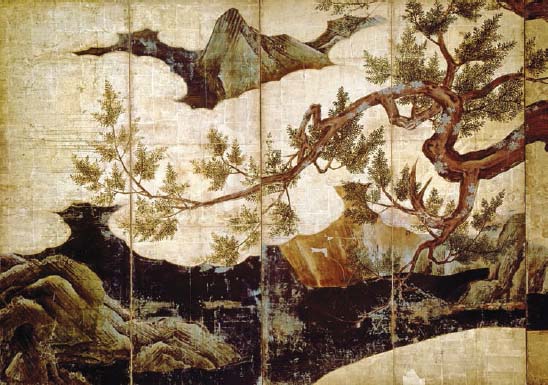Baroque and Beyond C. 1600–1850Asian Art |
How did Korean art change during the Choson period? |
The Choson Dynasty lasted in Korea from 1392 until 1910, when Japan annexed the country. During this very long period, Korean art was heavily influenced by Chinese art styles and ideas, but a specifically Korean, often secular, style of art slowly developed. For example, the artist, Kim Hong-do (1745–c. 1814), was known for his lively genre paintings that captured a sense of daily life in eighteenth and early nineteenth-century Korea. His paintings often depicted people engaging in normal activities such as studying at school, or sports activities like wrestling. He is known for a painting called Schoolroom (c. 1814), which shows a young student bursting into tears when he doesn’t understand his lesson. The schoolmaster, wearing a rectangular hat and a beard, looks distracted and unsure of how to proceed with the lesson.

Painted screens by the Kano family include Cypress Tree, an eight-fold work attributed to Kano Eitoku (1543–1590), which was originally used as a sliding door. The artist emphasized the texture of the bark of the tree while simplifying the background, which serves to monumentalize the tree and evoke the vastness of nature. (Art courtesy Tokyo National Museum, Japan / The Bridgeman Art Library.)
